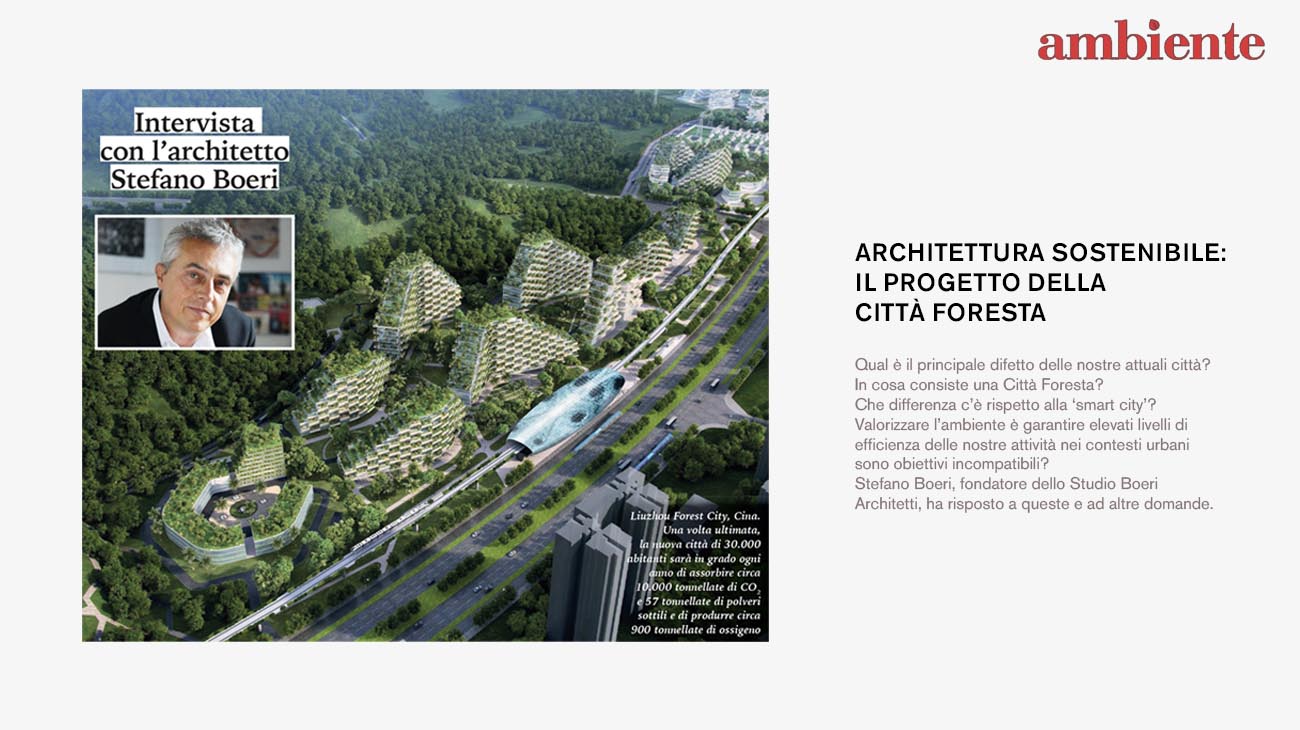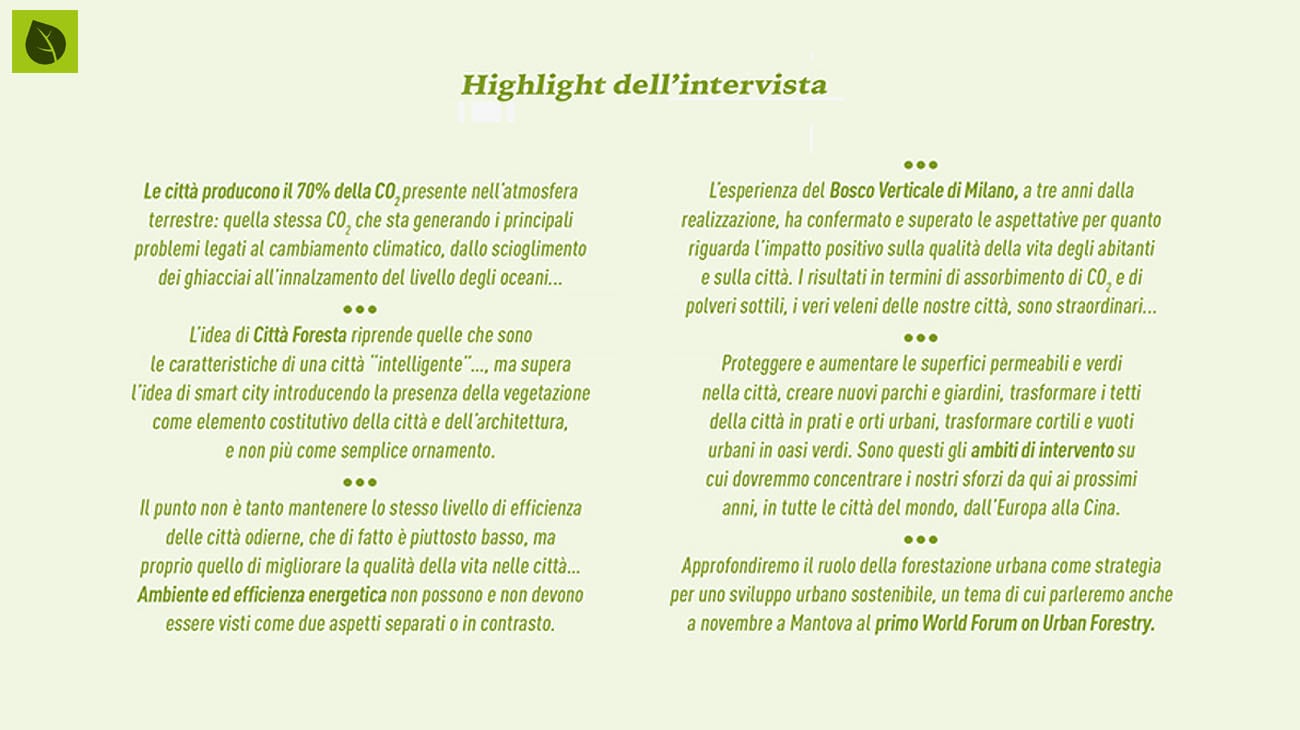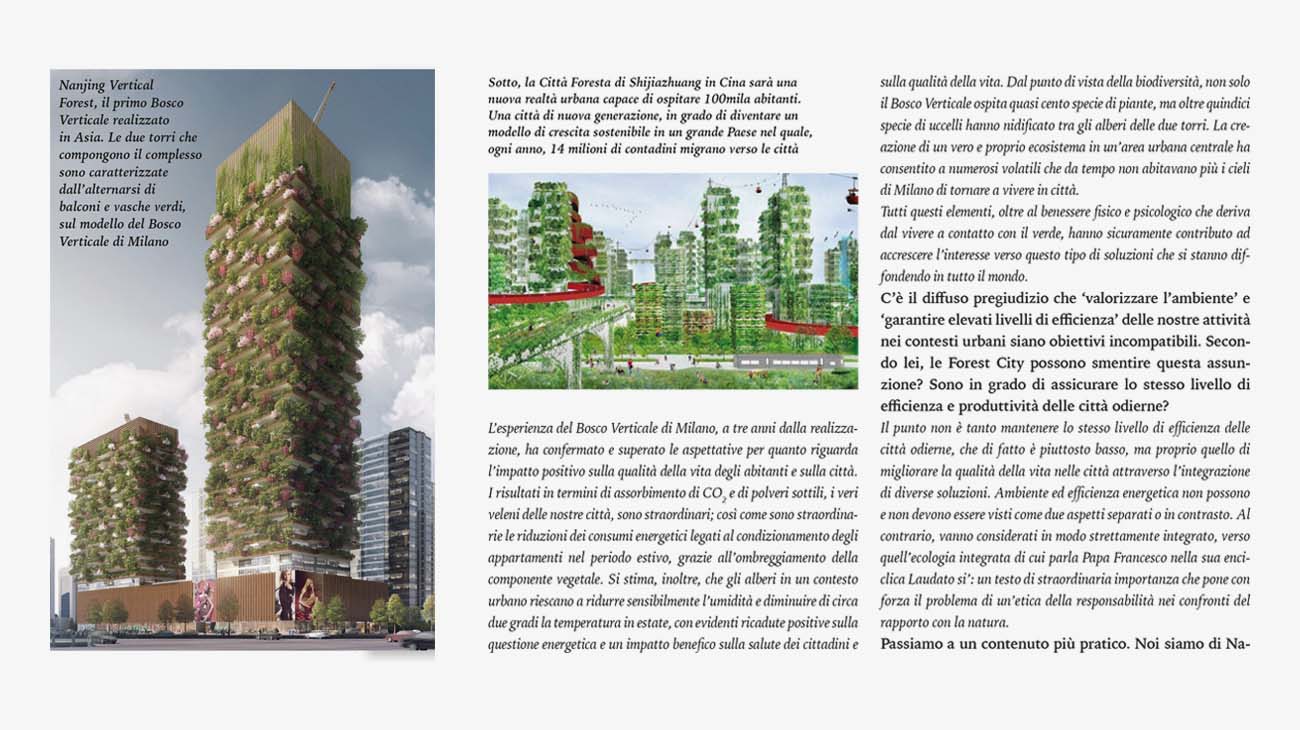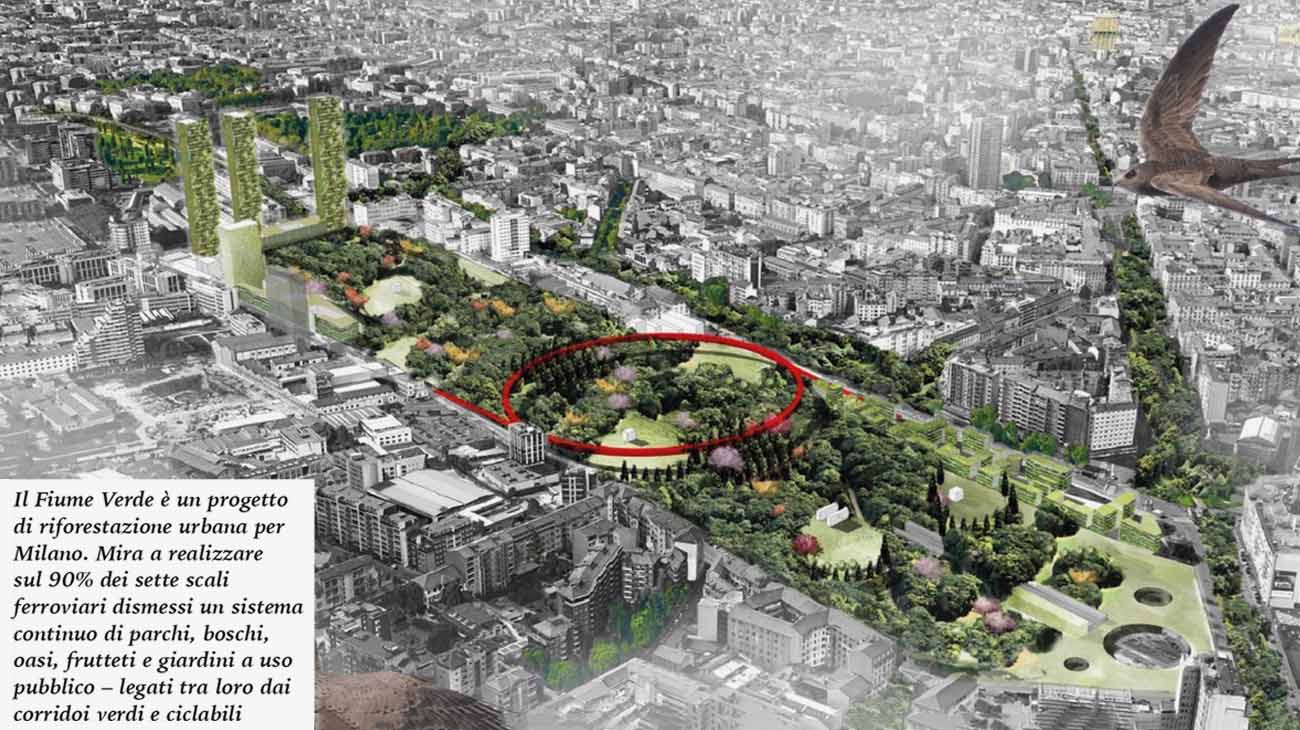One of the main characteristics of Stefano Boeri Architetti‘s work is the huge attention towards sustainable architecture and the relationship with men, architecture and nature. There is no doubt that taking into consideration in the design process social, natural, environmental, animal elements cannot but enrich the project itself on the one hand and can strenghten the regenerative power of the intervention in the context it belongs to on the other hand.
This is the opening of Stefano Boeri‘s interview by Grazia Giordano, collaborator of LongTerm Economy Organization and Dario Ruggero, its founder.
You can not forget that cities, the way they have been designed up to now, currently produce 70% of CO2 of planet earth atmosphere and contribute in a very significant way to climate change. Stefano Boeri and his office architects have been working for a long time on this topic searching for new strategies, both at a big and at a small scale, to address this dreadful tendency. They can deal with masterplans or with a single building but they always integrate vegetation elements, whether they are tress or bushes, into the design process and this has become a signature of the office work by now together with the research on woods and forests and their power to absorbe 40% of carbon dioxide produced by cities.
Planning well sized intervention of Urban Forestry is going to reduce sensibly the presence of polluting agents and of fine dusts and could also contribute to preserve a good degree of biodiversity granting many living species’ survival.
Stefano Boeri Architetti designed two Forest Cities, in Shijiazhuang and Liuzhou in China: they are completely sustainable urban projects that aim to mend the relationship between man and nature that industrialization process once compromised.
The turning point of the interview is in Stefano Boeri’s statement that there are proved analogies between Forest Cities and Smart Cities as the Forest City has the same characteristics of cities that we define as “smart” in terms of mobility, infrastructures and sustainability but it overcomes the idea of smart city introducing the presence of vegetation as a structural element of the city itself and of its architecture and it does not consider it just as an ornament”.
The Verical Forest is for sure the project that allowed to prove the positive effects that vegetation has first on some environmental parameters such as CO2 absorption rates. If you consider that vegetation in a building reduces sensibly humidity rates, contributes to lower the temperature during summer, gives an habitat to more than one hundred different species of plants where more than fifteen differnet species of birds made their nest, in a short period of time the two towers of Porta Nuova are providing an habitat for a new urban ecosystem.
All these elements, together with the physical and psychological wellness that living in contact with nature provides, contribute for sure to arise awareness and interest towards this type of solutions that are now being adopted worldwide.
The presence of plants along streets and avenues, in gardens and parks, but also on building façades is going to be the distinctive trait of this new type of city and it is going to improve air quality, reduce its average temperature, work as a soundblock system, absorbe fine dusts and implement biodivesity creating a new friendly environment to birds, insects and other small animals.
Visit this link to read it online: http://www.ambiente-online.it/public/rivista/ambiente113Flip/mobile/index.html#p=7




